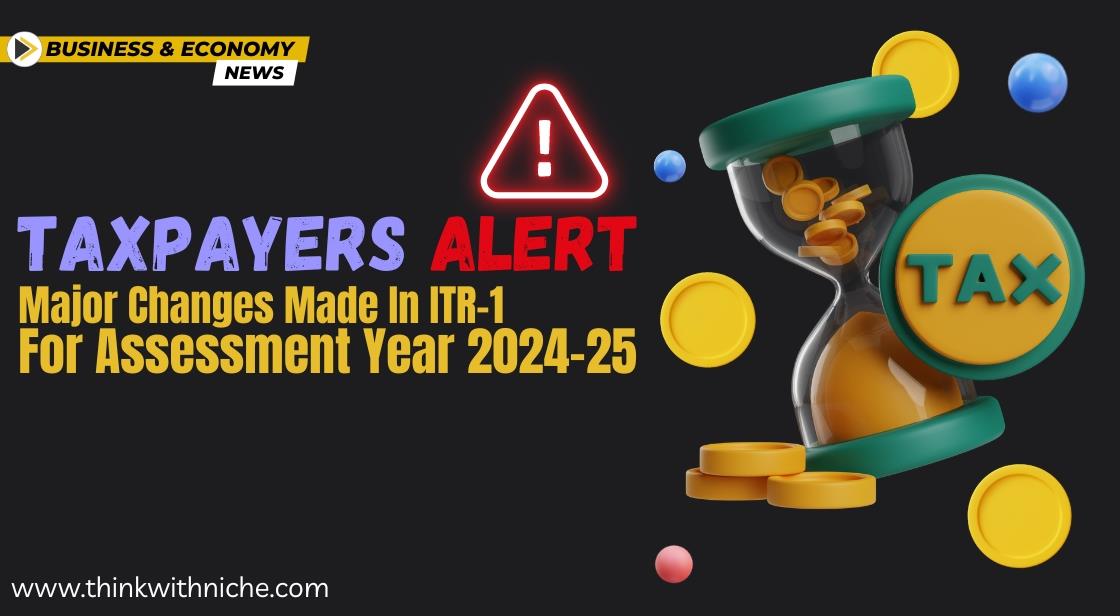Taxpayers Alert! Major Changes Made in ITR-1 for Assessment Year 2024-25

News Synopsis
The Income Tax Return (ITR) filing season for the Assessment Year (AY) 2024-25 is here! Individual taxpayers, bodies of individuals (BOIs), and associations of persons (AOPs) have until July 31, 2024 to file their returns without incurring late fees.
This year, however, there are some crucial changes to be aware of, particularly for those filing under the ITR-1 (Sahaj) form.
Let's delve deeper into these updates and ensure a smooth and compliant tax filing experience.
Understanding ITR-1 Form
What is ITR-1?
ITR-1, or the Sahaj Form, is intended for resident individuals with specific income criteria. Eligible individuals are those whose total income for the financial year does not exceed Rs 50 lakh. Income sources covered under ITR-1 include:
Who can file ITR-1?
The ITR-1 form is ideal for resident individuals with a total income for the financial year (FY) 2023-24 not exceeding ₹50 lakh. Eligible income sources include:
-
Salary
-
Income from a single house property
-
Family pension income
-
Agricultural income (up to ₹5,000)
-
Other sources like:
-
Interest from savings accounts
-
Deposits (bank/post office/cooperative society)
-
Income tax refund interest
-
Interest on enhanced compensation
-
Any other interest income
-
Family pension
-
Filing ITR-1 online
The Income Tax Department's e-filing portal offers a convenient pre-filling and filing service for ITR-1 forms. Registered users can submit their returns online or use the offline Excel utility.
Here's a breakdown of the online filing process:
-
Access the e-filing portal and log in.
-
Locate the pre-filled ITR-1 form.
-
Review and edit (if necessary) pre-filled sections like:
-
Personal Information
-
Gross Total Income
-
Total Deductions
-
-
Verify the tax computation summary.
-
Submit your completed ITR-1 form.
Key Changes in ITR-1 for AY 2024-25
This year's ITR-1 form incorporates two significant updates:
-
Specifying your preferred tax regime: As per the Finance Act 2023 amendments to Section 115BAC, the new tax regime is now the default option for individuals, HUFs, AOPs, and BOIs. However, taxpayers who wish to continue with the old regime must explicitly opt out of Section 115BAC(6).
-
Tax deduction for Agnipath Scheme: The Finance Act 2023 introduced Section 80CCH, allowing individuals enrolled in the Agnipath Scheme and contributing to the Agniveer Corpus Fund (on or after November 1, 2022) to claim a tax deduction for the entire deposited amount. ITR-1 now includes a dedicated section for taxpayers to specify details pertaining to this deduction.
Benefits of the Changes
These changes are aimed at simplifying the tax filing process and ensuring taxpayers can make informed decisions about their tax regimes. The introduction of Section 80CCH provides additional tax-saving opportunities for individuals participating in the Agnipath Scheme, further encouraging savings and investments.
Conclusion
The updates to the ITR-1 form for AY2024-25 reflect the government's efforts to streamline tax filing and offer more options for taxpayers to manage their finances effectively. Taxpayers should familiarize themselves with these changes to take full advantage of the benefits provided. Ensure timely and accurate filing to avoid penalties and make the most of the new provisions.
You May Like









